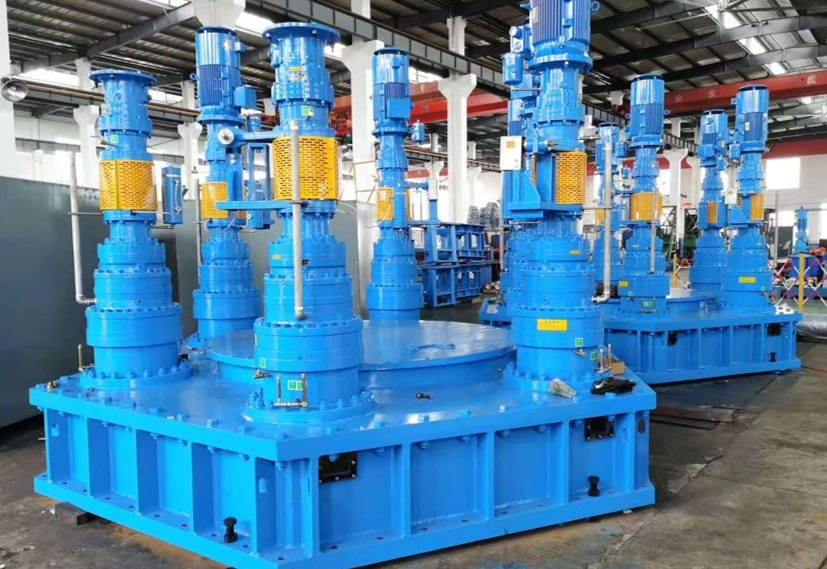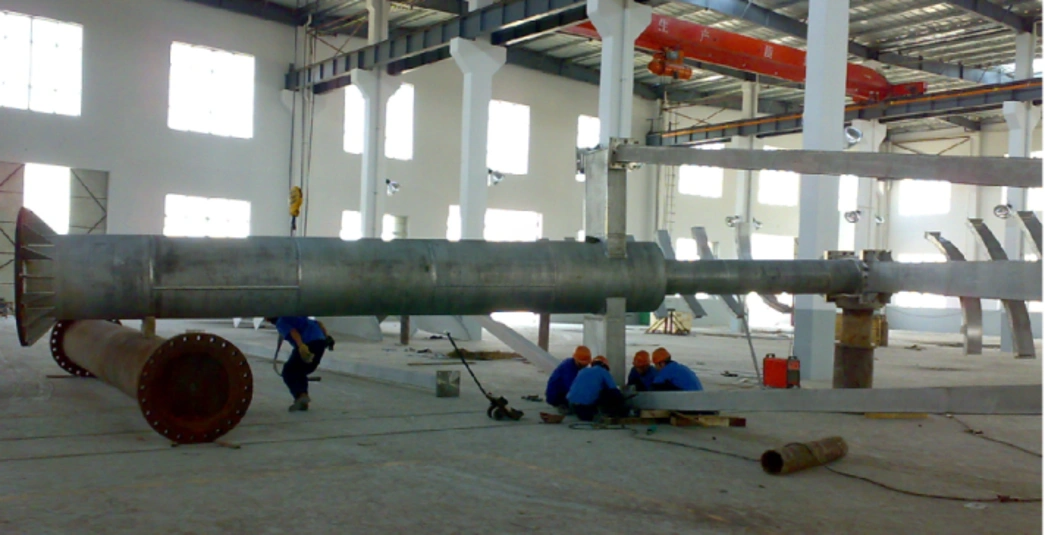Thickeners stand as key equipment in many factory jobs. They help split solids from liquids well. This is vital for good work. These smart machines use gravity pull and special chemical tricks to make slurries thicker. They get back useful stuff and clean water for reuse. Knowing how thickeners run from start to finish is basic for builders, workers, and bosses. This covers fields like digging mines, mixing chemicals, cleaning dirty water, and handling minerals.

The Basic Mechanism of a Thickener
Thickeners run on gravity split plus chemical help. Solids drop to the bottom on their own. Flocculants make this faster. Clear liquid spills over from the top. Fresh feed comes in the middle. It gets caught by rings of grooves and pipes around the edge.
Core Components and Their Functions
The build of a thickener has main parts that team up. They reach top split speed. From high to low, you find the drive part like a motor. It spins the rake setup. Next comes the bridge for walking. Then the tank for holding and settling. After that, the feed way. And last, the rake machine.
Drive device
It splits into gear drive kind and fluid drive kind. The fluid drive is what many factory folks pick often. But the gear drive for thickeners fixed up by our group shows better scores in every way. The drive setup gives the push needed to keep the rake going. It handles changing weights all the time.
Rake Mechanism
The chief job is to shove settled solids to the middle out spot. It stops the tank bottom from clogging with hard stuff. And it spreads new feed even to avoid blocks. The thick mix at the bottom turns with the rake. It slowly bunches up at the bottom out spot. There it dumps the wanted mix.
Role of Gravity and Flocculation
New thickening ways lean a lot on better drop tricks. They get top scores. Most up-to-date jobs use flocculation drop. This lifts drop speed by tens of times. When flocculation hits best, the middle zone vanishes. This chemical boost lets thickeners take way more flow. Yet they keep great clear results.
Types of Thickeners and Their Applications
Picking the right thickener tech hangs on exact job wants, feed traits, and hoped-for scores. Varied builds give clear pluses for different factory uses.
Conventional vs High-Rate Thickeners
Old-style thickeners run at fairly low feed speeds. They give normal clear work fit for lots of basic jobs. On the flip side, high-rate thickeners add fresh build traits and better flocculation setups. These reach way higher hold and speed. Capacity of NHD-serial deep cone thickener is 15 times as much as common thickener capacity while the underflow compressive ability is almost 10 times as common thickener.
Specialty Thickeners for Industry-Specific Needs
Special jobs often need custom thickener builds. These meet odd process calls. NHD-serial deep cone thickener got made and used well in alumina for red mud split and wash setup. It lifts solid amount in red mud. This pushes alumina waste handling to a fresh level.
Counter-current decantation (CCD) tech shows a high-level use way. Counter-Current Decantation means back-flow wash tech. It links many thickeners in a row. Slurry starts at the first thickener. It flows down step by step. Wash water gets pumped from the last thickener. It flows up step by step. This fully cleans solvable bits in the slurry. Often used for washing alumina red mud and titanium dioxide waste bits.

Operational Factors Influencing Thickener Efficiency
Good thickener running calls for close watch on many changes. These hit scores and trust straight on. Knowing these bits lets workers tweak equipment work. And keep steady outcomes.
Feed Characteristics and Flow Rate
Traits of coming feed stuff sway thickener work a bunch. This covers bit size spread, solid thickness, and chemical mix. Feed flow speed must get handled with care. Stop water overload. But keep best stay time for good drop.
Rake Torque and Underflow Density Control
Watching and handling rake push gives key clues on thickener running and possible troubles. A usual flop in work is motor overload and shut-off. Sometimes arms twist because bottom mud can’t dump on time. It piles up at the base. This ups the hard part for thickener running.
High-level push watch setups help block work issues. The torque sign made by NHD can fix the trouble named above. It spots push shifts in running right then. And tweaks process info to even bottom mud and dumping mix. This holds push in set span. And promises steady making.
Maintenance Practices for Reliable Operation
Strong care plans are must for sure long-run trust and top work of thickener equipment. Usual care steps block surprise flops. And stretch equipment use life.
Routine Inspections and Mechanical Checks
Usual gear checks should aim at drive bits, rake build wholeness, and bearing shape. Multi-drive heavy load rotary bearing and bath lubrication are applied in NHD serial thickeners. Right grease care is key to block early rub. And make sure smooth running under big weight.
Monitoring Instrumentation and Process Parameters
Fresh thickeners add smart watch setups. These give now-time running info. NHD serial thickener with DCS can watch stuff from all sides. It mixes linked equipment and process info to run on its own. NHD brings in UK tech. And checks mix level and solid amount by sound waves. This gives info for control setup.
Push can get spotted right by tool. And sign goes to user’s control hub. This now-time watch skill lets workers answer fast to shifts. And hold best work.
NHD: A Trusted Supplier of Industrial Equipment Solutions
Top makers give full thickener answers built to fit wide factory wants. High build skills and big use know-how let making of custom equipment for exact process needs.
Comprehensive Product Offerings Across Multiple Series
Up-to-date thickener makers give whole equipment answers with high auto skills. After thickener setup, the buyer just links power to the control box. And starts the equipment. All other day jobs, like handling blocks such as rake lift, finish on their own by the machine. Making flocculants can finish on its own too. After the buyer gets flocculant dust and adds to the dust bin, the equipment adds water on its own to blend. And shoots it into the tank.
Fresh build skills let top-notch work levels. The thickness of mix with 55% solid can rise to 70%. Maybe no other group in the world can do this. A thickener can save the plant tens of millions in gain. If mix thickness rises by steam without thickening, it needs lots of power.

Summary of Key Concepts
Good thickener running needs full grasp of equipment basics. Right pick of tech for exact jobs. And set up of strong care plans. Main win bits include fit feed handling, ongoing watch of running signs, and ahead care ways. Fresh thickener builds add high auto and watch skills. These lift running trust and work steadiness a lot.
FAQs
Q1: What industries commonly use thickeners?
A: Thickeners are widely applied in mineral processing (separating fine minerals from water), chlor-alkali plants (salt mud separation), wastewater treatment, and wet phosphoric acid production. In the phosphate industry, they handle tailings treatment, wet phosphoric acid slurry concentration and phosphogypsum dehydration, yellow phosphorus ore pretreatment, phosphate fertilizer post-reaction concentration, and wastewater treatment. In the titanium industry, they manage tailings and titanium concentrate dehydration, TiO₂ slurry concentration and gypsum dehydration, titanium slag slurry treatment, and wastewater treatment.
Q2: How do I choose between a conventional thickener and a high-rate thickener?
A: The choice depends on your capacity requirements and space constraints. High-rate thickeners offer significantly higher throughput in smaller footprints. Capacity of NHD-serial deep cone thickener is 15 times as much as common thickener capacity while the underflow compressive ability is almost 10 times as common thickener. Consider high-rate designs when you need maximum efficiency, have limited installation space, or require superior underflow density control.
Q3: What causes poor overflow clarity in a thickener?
A: Poor overflow clarity typically results from inadequate flocculation, excessive feed rate, improper flocculant dosing, or mechanical issues with the rake system. Rational structure design can minimize destruction to wooly masses during dilution, flocculent feed. Proper equipment design and operational control are essential for maintaining clear overflow. Monitor feed characteristics, adjust flocculant addition rates, and ensure proper mixing conditions to achieve optimal clarification performance.

